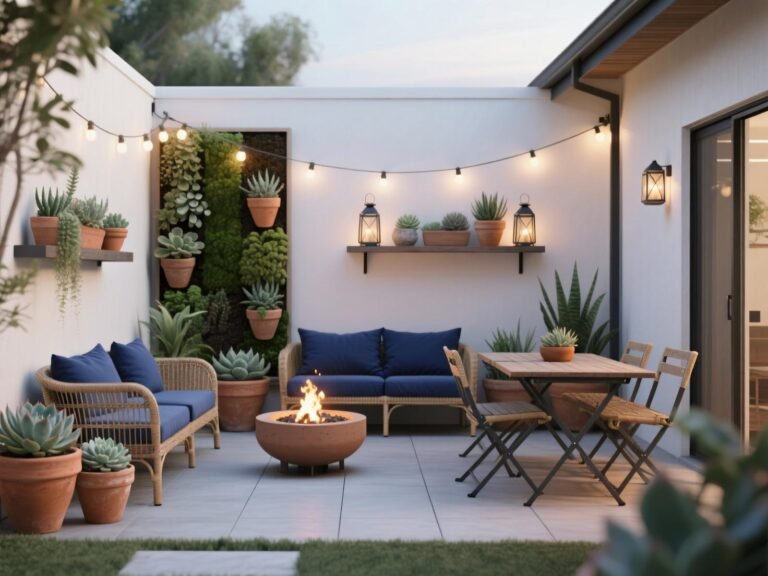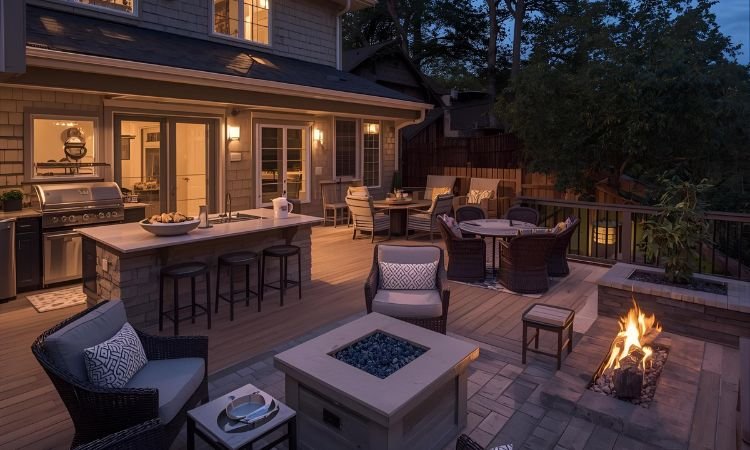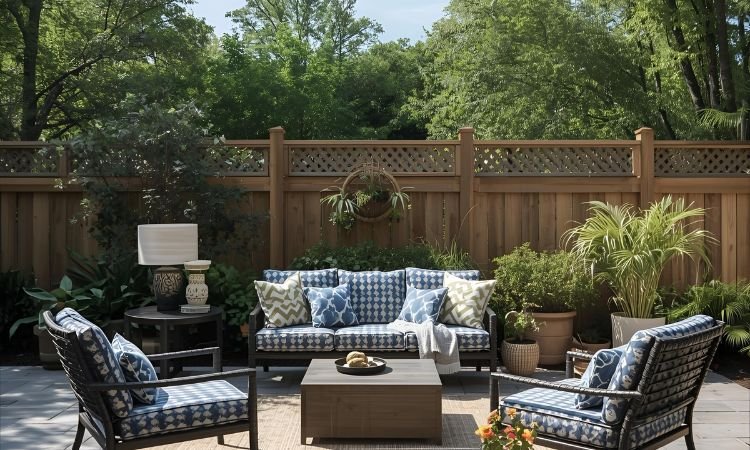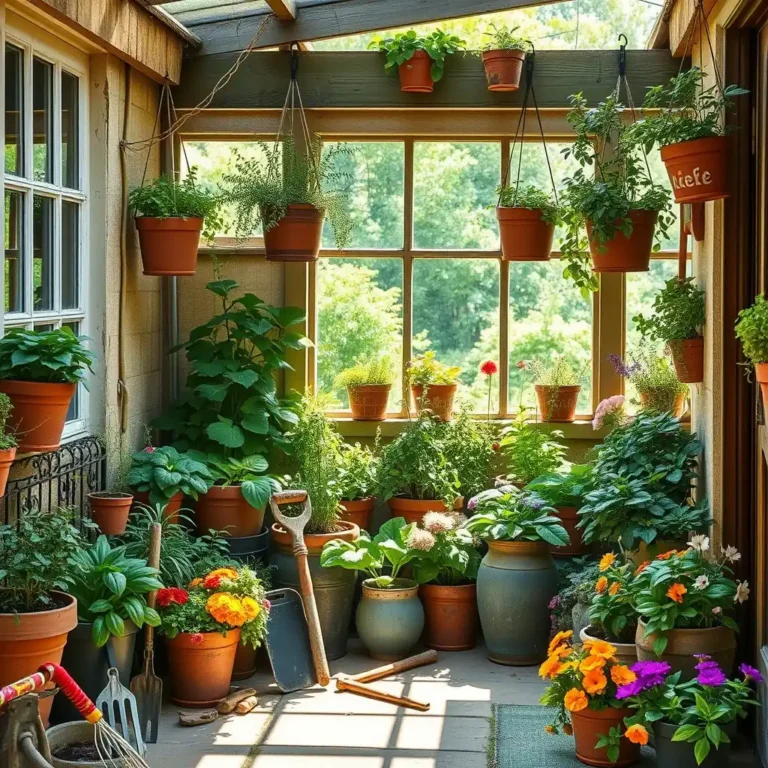Italian Patio Design Ideas: Create a Tuscan-Inspired Outdoor Oasis
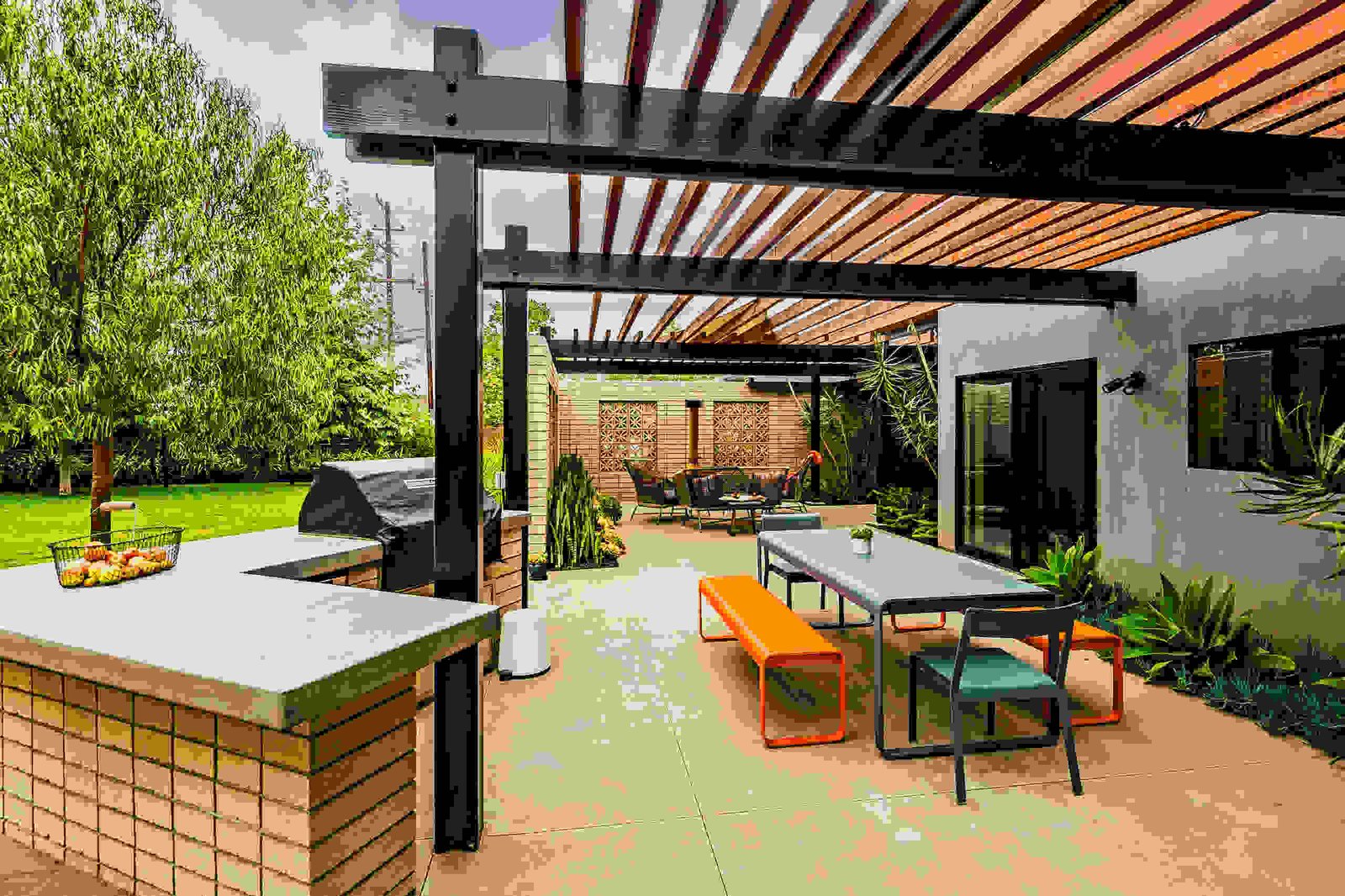
Few cultures celebrate outdoor living as passionately as Italians do. Whether it’s sipping espresso under a pergola, sharing pizza in a sunlit courtyard, or chatting over wine late into the night — Italians have perfected the art of enjoying life al fresco.
An Italian patio brings this magic home. It’s not just a design trend — it’s a reflection of La Dolce Vita, the “sweet life” rooted in beauty, simplicity, and connection.
From rustic Tuscan terraces to coastal Mediterranean courtyards, Italian patios combine natural textures, timeless design, and everyday comfort.
I. Hallmarks of Italian Patio Design
Italian patio design is built around authenticity and harmony with nature. The goal isn’t perfection — it’s patina. Everything should feel naturally aged and effortlessly charming.
Signature elements include:
- Natural materials: stone, terracotta, travertine, and wood that weather gracefully over time.
- Earthy color palettes: warm ochres, muted greens, and soft whites inspired by the Tuscan countryside.
- Organic shapes: curved walls, arched doors, and flowing layouts instead of sharp geometry.
- Balance of texture: rough stone next to smooth ceramic, sun-faded paint beside vibrant tiles.
- Inviting atmosphere: every corner encourages relaxation, conversation, or dining.
II. Classic Italian Patio Styles
A. Tuscan-Style Patio
The Tuscan patio is timeless — rustic, sun-drenched, and earthy.
Use aged stone, terracotta tiles, weathered wood beams, and iron furniture. Decorate with lavender, rosemary, olive trees, and climbing ivy.
For color, think sunbaked terracotta, dusty sage, and antique bronze.
Tip: Add a wrought-iron chandelier or lanterns under your pergola for a soft, romantic glow.
B. Mediterranean Coastal Patio
Inspired by Amalfi, Capri, and Sicily, this patio style is bright, airy, and breezy.
Pair whitewashed walls with blue-and-white tiles, linen curtains, and rattan chairs.
Add lemon trees, bougainvillea, and ceramic pots painted with marine motifs.
Design note: Blue evokes the Mediterranean Sea — use it on cushions, tableware, or tile borders for instant coastal flair.
C. Urban Italian Courtyard
For smaller city spaces, Italian design proves that intimacy can be luxurious.
Think cobblestone floors, climbing vines, compact bistro tables, and potted herbs.
A water fountain or wall sculpture adds a traditional touch without taking up space.
Pro tip: Vertical gardens or ivy-covered walls create privacy while adding greenery to tight patios.
D. Sicilian-Inspired Patio
Vibrant and artistic, the Sicilian patio celebrates color and pattern.
Use bright ceramics, colorful mosaics, and painted tiles with lemons, suns, or floral motifs.
Accent with citrus plants, wicker seating, and woven rugs.
This style feels festive, ideal for families who love bold colors and joyful outdoor living.
III. Flooring and Architectural Details
The foundation of Italian style lies in craftsmanship. Choose materials that tell a story:
- Terracotta or travertine tiles for rustic texture.
- Mosaic stone or cobblestone pathways for Old World charm.
- Stucco or limestone walls for timeless Mediterranean character.
- Arches, columns, and pergolas for visual rhythm and shade.
- Clay roof tiles or wooden pergolas to complete the look.
Design inspiration: Uneven stonework or cracked tiles only add authenticity — embrace imperfections!
IV. Furniture & Layout Ideas
The right furniture turns your patio into an Italian living room outdoors.
- Dining area: A long, wooden farmhouse table surrounded by iron or wicker chairs.
- Lounge zone: Soft cushions, linen fabrics, and a low coffee table for lazy afternoons.
- Built-in benches: Stone or concrete benches topped with plush pillows.
- Mix old and new: Combine vintage finds with modern minimalism.
Pro tip: Italians favor conversation-friendly layouts — arrange seating around a central table, fire pit, or fountain.
V. Dining & Outdoor Cooking Spaces
Food is the soul of Italian living — and the patio is its stage.
- Pizza oven: Nothing says Italy like a handmade pizza oven.
- Outdoor kitchen: Add a stone countertop, sink, and wood storage area.
- Wine corner: Use a reclaimed barrel as a bar table.
- Family dining: Use long wooden tables, patterned tablecloths, and candlelight.
Idea: Serve rustic platters of antipasti, fresh herbs from your garden, and a carafe of red wine for the ultimate Italian experience.
VI. Greenery & Garden Elements
Italian gardens celebrate nature in organized abundance.
Essential Mediterranean plants:
- Olive and lemon trees
- Lavender and rosemary
- Cypress and grapevines
- Geraniums, jasmine, and climbing roses
Use terracotta pots, urns, and wall planters.
Layer plants in varying heights to add depth and dimension.
Bonus idea: Create a small herb garden near your cooking area — it’s both beautiful and practical.
VII. Lighting & Ambiance
Lighting brings Italian warmth after sunset.
- String lights for festive sparkle.
- Lanterns and sconces for old-world character.
- Candles in glass jars for soft glow.
- Fire pits or outdoor fireplaces for cool nights.
Mood tip: Italians love ambient golden light — avoid bright white LEDs. Aim for warmth and intimacy.
VIII. Decorative & Artistic Touches
Your decor should reflect craftsmanship and heritage:
- Hand-painted ceramic tiles for tabletops or walls.
- Sculptures and fountains that add a focal point.
- Vintage pottery and terracotta jars as decor.
- Rustic textiles like striped table runners or patterned cushions.
Styling trick: Mix earthy textures with one statement art piece, like a colorful mosaic or vintage mirror.
IX. Modern Italian Patio Ideas
Italian elegance adapts beautifully to modern homes.
Try:
- Clean lines with organic accents.
- Neutral tones with pops of terracotta or teal.
- Polished concrete floors mixed with warm wood furniture.
- Minimalist pergolas paired with lush greenery.
Eco option: Use recycled stone or reclaimed timber for a sustainable twist.
X. Seasonal Styling Inspiration
Keep your patio dynamic all year:
- Spring: Fresh herbs, pastel cushions, floral tableware.
- Summer: Linen fabrics, citrus decor, and airy curtains.
- Fall: Terracotta tones, throws, and harvest-themed accents.
- Winter: String lights, fire pits, and cozy blankets.
Insider tip: Seasonal rotation keeps your patio exciting without costly redesigns.
XI. Budget-Friendly Italian Patio Makeover
You can achieve Italian charm without spending like a villa owner:
- Choose porcelain tiles that mimic natural stone.
- DIY painted terracotta pots and mosaic art.
- Upcycle old wooden furniture with rustic finishes.
- Use solar-powered lights for eco-friendly ambiance.
Budget hack: Reuse indoor furniture outdoors with waterproof cushions and sealant.
XII. Small Space Italian Patio Ideas
Compact patios can still exude Italian luxury:
- Add vertical gardens or climbing vines for greenery.
- Use foldable bistro tables and stackable chairs.
- Opt for light colors to open up space visually.
- Integrate multi-use corners for dining and lounging.
Smart move: Mirrors and wall-mounted shelves can make tiny courtyards appear twice as large.
XIII. Inspiration from Famous Italian Villas
Steal secrets from Italy’s most iconic estates:
- Villa d’Este (Tivoli): grandeur, fountains, and symmetry.
- Villa Lante: tiered gardens and geometric layouts.
- Amalfi villas: coastal elegance with blue accents.
- Tuscan vineyards: rustic stone, olive trees, and sweeping views.
Moodboard idea: Study villa photos to inspire your materials, layout, or garden design.
XIV. The Role of Water Features
Water brings calm and character to Italian patios.
- Install a stone fountain for gentle sound.
- Add a reflecting pool with floating candles.
- Try a wall-mounted spout for compact courtyards.
The gentle trickle of water instantly transforms your patio into a meditative oasis.
XV. Patios with a View
Italians design with perspective in mind:
- Face seating toward gardens, hills, or sunsets.
- Frame views with arched pergolas or stone walls.
- Use rail planters for color and depth.
Pro tip: Even in urban settings, you can “borrow” a view — align your layout to highlight trees or skyline vistas.
XVI. Mixing Old & New
Italian design thrives on contrast:
- Combine modern lighting with antique tables.
- Pair concrete floors with aged wood beams.
- Blend sleek metal and handcrafted ceramics.
The mix of eras gives your patio soul — modern enough to feel fresh, classic enough to feel timeless.
XVII. Entertaining the Italian Way
Your Italian patio should invite laughter, music, and food.
- Host pizza nights or wine tastings.
- Add a portable projector for outdoor movie evenings.
- Play soft Italian jazz or folk music for ambiance.
- Use colorful ceramic dishes to present meals beautifully.
Fun fact: Italians often linger outdoors for hours after meals — design your patio for comfort and conversation.
XVIII. Sustainability in Italian Patio Design
Authentic Italian design respects nature:
- Choose local materials and low-water plants.
- Use reclaimed stone and wood.
- Install solar lights and drip irrigation.
- Compost plant waste or grow herbs organically.
Sustainable patios last longer and stay beautiful with minimal maintenance.
XIX. Regional Variations Across Italy
Different parts of Italy inspire distinct design moods:
- Northern Italy: Alpine wood, cool stone, elegant simplicity.
- Central Italy (Tuscany, Umbria): warm colors, earthy charm.
- Southern Italy (Sicily, Puglia): vibrant tiles, bright colors, seaside textures.
You can mix elements from each region for a personalized Italian fusion patio.
XX. Lighting the Night: Creating Magic After Dark
When the sun sets, the Italian patio becomes a dreamscape.
Layer different light sources:
- Overhead string lights for sparkle.
- Lanterns and wall sconces for atmosphere.
- Candles on every table.
- Fire bowls or torches for warmth and visual drama.
Lighting defines mood — soft, layered, and golden for the true Italian glow.
XXI. Color Psychology in Italian Patios
Each hue tells a story:
- Terracotta: warmth and tradition.
- Blue: peace and Mediterranean freshness.
- Green: balance and nature.
- White: purity and brightness.
Combine them thoughtfully to capture your ideal vibe — rustic, coastal, or elegant.
Conclusion: Living La Dolce Vita Everyday
An Italian patio is more than a style — it’s a way of living beautifully and slowly.
It’s where conversations linger, meals are savored, and life unfolds under open skies.
You don’t need a villa in Tuscany to feel its magic — just natural materials, warm colors, and love for outdoor living.
So pour a glass of Chianti, light your candles, and let your patio whisper La Dolce Vita every single day.



